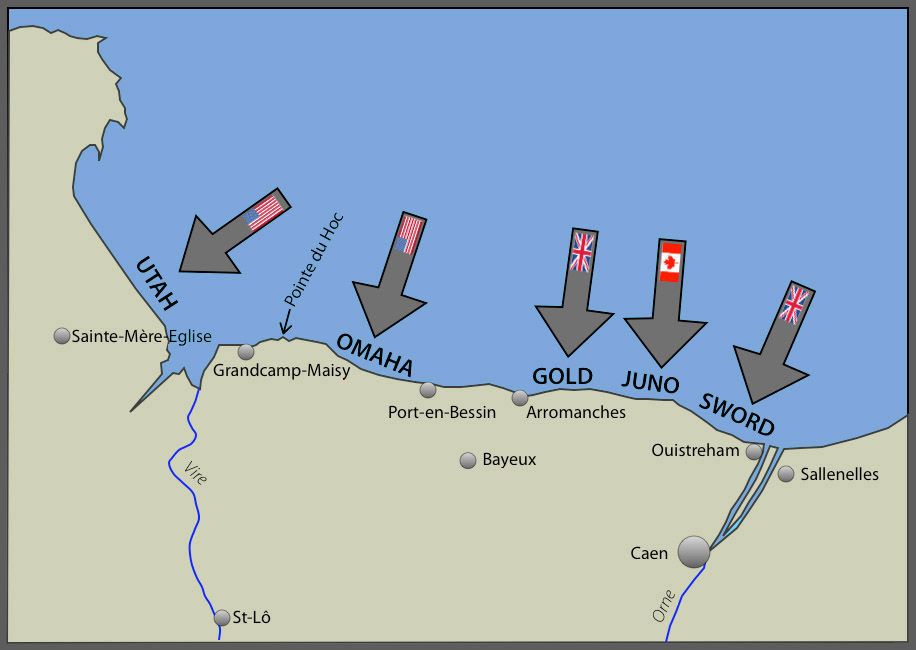
Normandy-9/28/2015 - 10/1/2015
Pointe du Hoc
Pointe du Hoc is a promontory with a 100 ft cliff overlooking the English Channel on the coast of Normandy. During World War II it was the highest point between Utah Beach to the west and Omaha Beach to the east. By mid-1944, German forces manned formidable defenses along the French coast. Of concern to the Allies were German 155mm artillery positions on Pointe du Hoc. They could wreak havoc on Utah and Omaha Beaches. The German army fortified the area with concrete casemates and gun pits. On D-Day, June 4, 1944 Col. Earl Rudder and the Second Ranger Division scaled he 100-foot cliffs and seized the German artillery pieces that could have fired on the American landing troops at Omaha and Utah beaches. At a high cost of life, they successfully defended against determined German counterattacks.

Early on the morning of June 6th 1944 700 ships of all sizes approached the coast on Normandy. This was the largest flotilla the world had ever seen, and has never been surpassed. The five beaches selected for the landings have been known by their code names ever since. The two American beaches: Utah and Omaha, the two British Beaches: Sword and Gold, and the Canadian Beach:Juno.
Timeline
In the parking lot a large panel tell the story of Ranger Casualties and their sacrifice (picture on the right):
|
|

Panoramic view of Pointe du Hoc.
Pointe du Hoc is open to the public daily. Hours of operation are 9 a.m. to 6 p.m. from April 15 to September 15, and 9 a.m. to 5 p.m. the rest of the year.

Surviving observation bunker at the Pointe du Hoc.
|
|
|
Inside the bunker.

The site has remained relatively unchanged since 1944, large bomb craters and uneven ground fill the landscape.

Remains of a gun pit.
Unlike many of the WWII battle sites that have memorials or museums, this location has remained largely untouched since the battle that occurred here; visitors can still see the scars on the ground and it's easy to see why this was such an important stronghold.

Observation deck on top of a bunker.

|
|
|
Inside the bunker
|
|

We are now walking toward the Pointe du Hoc Ranger Monument (straight ahead in the back ground). With time grass grew back in this battle-scarred area.

Today, the Cliffside of Pointe du Hoc is the location of The World War II Pointe du Hoc Ranger Monument, which was built and erected by the French directly on top of the German bunker that was seized by the Americans to honor the American Second Ranger Battalion under the command of Lt. Col. James E. Rudder.
|
The memorial on top of the observation bunker. Stairs leading to bunker. |
Pointe du Hoc Ranger Monument is located on a cliff eight miles west of Normandy American Cemetery, which overlooks Omaha Beach. |

The monument consists of a simple granite pylon positioned atop a German concrete bunker with tablets at its base inscribed in French and English. The monument was formally transferred to ABMC for perpetual care and maintenance on January 11, 1979.


View of the beach and its cliffs.
German bunker served as the nerve center for the Germans at Pointe Du Hoc.

The bunker is actually pretty big.

Small opening in the bunker -View from the exterior looking in.

View from inside the bunker-This is what the German soldiers see when they were inside the bunker trying to protect the area.

More view of the beach from the outside of the bunker.
NEXT...LE MONT ST MICHEL